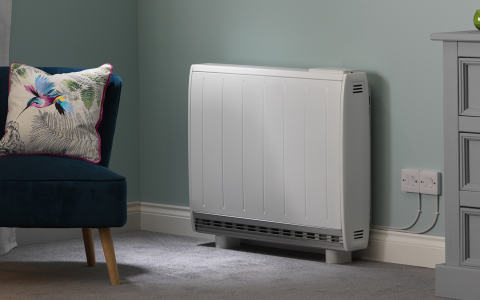
Top tips for mould and damp prevention

Waking up to condensation on your windows is an early warning sign that the air inside your property is too humid, eventually leading to mould and damp problems within your home. Showering, bathing, cooking, even simply breathing, all increase the levels of moisture in the air.

What is mould?
Mould is a type of fungus that destroys dead material, and in the wider world they serve a useful purpose in breaking down organic material such as leaves and enriching the soil. Mould flourishes in areas where there is excess moisture and warmth, and this can lead to its unwanted growth in the home.
Mould produces allergens, irritants, and in some cases toxic substances, which can have a detrimental effect on those who come in contact with them. The health issues that mould in the home can cause or contribute to include respiratory problems or infections, allergies and asthma. The NHS also advises that some people, such as babies and children, the elderly or those with existing problems such as asthma or eczema, could be more susceptible.
When it comes to mould and moisture, prevention is always better than a cure, so we are here to provide you with useful tips and tricks for preventing mould and damp occurring in your home.

Use heating products that can operate constantly
In an attempt to save money on bills, many of us turn our heating off when we feel it is not needed; however, this can lead to mould growth – a much more expensive issue to address. Products like the Dimplex Q-Rad electric radiator are adjusted using a thermostat, allowing you to use a gentle output and keep running costs to a minimum.
Open a window
Opening a window is the cheapest way of getting rid of excess moisture. The stagnant inside air is warm and moist, whilst the outside air is cooler and drier - doing something as simple as opening a window will allow the excess moisture to escape. Alternatively, you can open the window vent as a secure way of airing out your property whilst you are out.
Change tactics with the seasons
Condensation can become more of a problem in colder weather, as some of the best methods of combatting it, e.g., drying clothes outdoors and opening doors and windows to circulate fresh air, become more difficult in the cold or the rain. So in autumn and winter it’s important to make sure you keep your home well heated, and keep a watch out for instances of mould growth and tackle them immediately if you find them. The internet holds a host of advice for effectively cleaning mould, such as this one.

Dehumidify your home
If open windows do not help the excessive moisture collecting in your home, then using a portable dehumidifier can be an ideal solution. Easy to transport between rooms, the EverDri dehumidifier can help you take easily control moisture levels in any room. The largest model, the 20L, even has a laundry setting for those winter months when you have to dry your clothes inside. With varying sizes to suit all applications, these will dry out the air in your home, preventing any ill effects from excess humidity.
Consider a 24-hour ventilation solution
Bathrooms can be the worst offenders for damp and mould growth. If you also find this to be true for your home, it may be worth investing in a bathroom extractor fan such as the Simply Silent C4, made by our sister brand Xpelair. This fan uses a humidistat to detect the humidity in a room and responds accordingly, working near-silently to draw moisture out of the room, helping to prevent odours, damp and mould growth.
Whether you’re combatting an existing problem or guarding against one, taking steps to tackle the growth of mould and moisture in the home can ensure you and your family enjoy the changes of autumn in good health and comfort.











